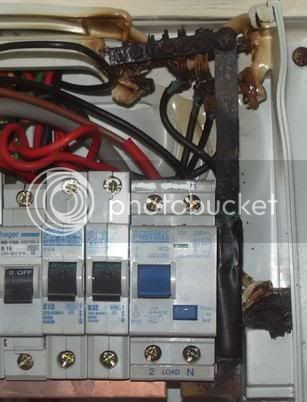IT'S ALIVE!!!!!
So, I hacked off the power lead from the dreaded power-devil router, which had a 13amp fused plug, wired up the cone-thing, plugged it in tentatively pressed the green button - nothing. Hmm - doh! The emergancy stop button was pressed on the other side.
So anyways, I clicked off the emergency stop button, pressed the green-button, all the lights went out, the motor started up, 5 secs later the lights came back on and it was purring away very smoothly. I only ran it for 20 seconds or so, I tried to feed a bit of wood through it, but the outfeed table is currently a bit higher than the blade so I stopped - that'll need sorting out.
So, I am hyper-relieved that it all works ok, sounds fine, doesn't vibrate and didn't blow the 13amp fuse. So, i'm going to buy a good heavy duty extension to run this from a seperate socket in the house as and when I need it, but I doubt i'll be using it extensively - just for setup.
Here's another Q:
If I were to add a dust extractor, it clearly wont run on the single extension that ive currently got in the workshop along with the P/T. SO, would it be an ok setup 'FOR THE TIME BEING' to run the P/T on it's own extension on a seperate socket in the house, and the extractor on my current extension that powers my workshop? I'm able to power lights, mitre-saw and radio aswell as my shop-vac so i'm assuming a stand alone dust-extractor would be ok?
Either way, i'm now well chuffed that the swine is working, looks like a keeper after my mild panic today/lastnight.




